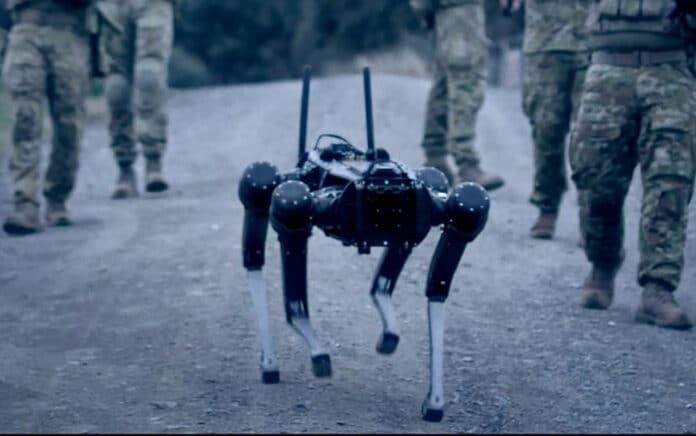Researchers from the University of Technology Sydney (UTS) have developed a biosensor technology that will allow you to operate devices, such as robots and machines, solely through thought control.
Brain–machine interfaces (BMIs) are hands-free and voice-command-free communication systems that allow an individual to operate external devices through brain waves. BMIs hold great potential for use in robotics, bionic prosthetics, neurogaming, electronics, and autonomous vehicles.
Such systems are typically consisting of three modules – an external sensory stimulus, a sensing interface, and a unit that processes neural signals. Among these, the sensing interface plays a crucial part by detecting the electrical activity generated by the brain’s outermost layer, the cerebral cortex, which is responsible for higher-level processes, including motor function.
The cortical electrical activity encodes human intent (brain waves) through either implanted or wearable neural sensors, such as electroencephalography (EEG) electrodes. Therefore, the availability of accurate and reliable dry sensors for EEG is vital to enable large-scale deployment of BMIs. However, dry sensors invariably show poorer performance compared to gold-standard wet sensors. The loss of performance with dry sensors is even more evident when monitoring the signal from hairy and curved areas of the scalp, requiring the use of bulky and uncomfortable acicular sensors.
UTS researchers address these issues by developing dry biosensors using cutting-edge graphene material combined with silicon. The material also helped researchers overcome issues of corrosion, durability, and skin contact resistance.

Graphene sensors developed by UTS are very conductive, easy to use, and robust. The hexagon-patterned sensors are positioned over the back of the scalp to detect brainwaves from the visual cortex. The sensors are resilient to harsh conditions, so they can be used in extreme operating environments.
The user wears a head-mounted augmented reality lens that displays white flickering squares. By concentrating on a particular square, the brainwaves of the operator are picked up by the biosensor, and a decoder translates the signal into commands.
“Our technology can issue at least nine commands in two seconds. This means we have nine different kinds of commands, and the operator can select one from those nine within that time period,” Professor Chin-Teng Lin said.
Australian Army soldiers operated a Ghost Robotics quadruped robot using the brain-machine interface. The device allowed hands-free command of the robotic dog with up to 94% accuracy.
“We have also explored how to minimize noise from the body and environment to get a clearer signal from an operator’s brain,” Lin said. However, this is not the final iteration of the researcher’s design. Further research and testing are needed to achieve a balance between the total available graphene area, the ability to accommodate the presence of hair, and the ability to maintain sensor contact with the scalp.
In addition to defense applications, the technology has significant potential in fields such as advanced manufacturing, aerospace, and healthcare – for example, allowing people with a disability to control a wheelchair or operate prosthetics.
Journal reference:
- Shaikh Nayeem Faisal, Tien-Thong Nguyen Do, Tasauf Torzo, Daniel Leong, Aiswarya Pradeepkumar, Chin-Teng Lin, and Francesca Iacopi. Noninvasive Sensors for Brain–Machine Interfaces Based on Micropatterned Epitaxial Graphene. ACS Applied Nano Materials, 2023; DOI: 10.1021/acsanm.2c05546
